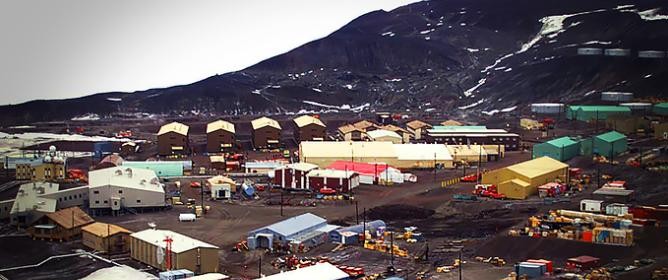Destroying Antarctica While Attempting To Save It

|
Getting your Trinity Audio player ready...
|
A new study has linked a chemical used in flame-retardants—called polybrominated diphenyl ethers (PBDEs)—that is contaminating the Antarctic environment to Australia’s Casey research station. Researchers found that dust and treated wastewater at the station contained PBDEs and another chemical that matched those found in products made in Australia, according to the study published in the journal Environmental Science and Technology. They detected the same chemicals on land and in krill living in the waters surrounding the station. Krill serve as prey for a host of marine animals, including whales.
The concentrations of the chemicals fell as the scientists sampled areas farther from the base. While the chemicals were more diluted than those found elsewhere in the world, Antarctica’s environment is one of the most vulnerable. The presence of chemicals such as this could be destroying Antarctica’s ecosystem.
Casey is just one of 70 research bases in Antarctica operated by 30 countries. More than 4,000 people migrate to the continent during the busy summer research season, bringing products containing flame retardants and other chemicals. The study comes as China, for instance, is expanding its presence in Antarctica.
“They are used in everyday consumer products such as textiles, electronic equipment, and furniture, and as human activity increases in these remote regions, so too will our chemical footprint,” said Susan Bengtson Nash, a coauthor of the study and a senior research fellow at Griffith University in Australia.
The impact of the pollutants in such an extreme ecosystem has yet to be fully understood. Nash points out that some scientists have hypothesized that polar organisms are more sensitive to chemical toxicity because their metabolisms are slower, and they may lack mechanisms to flush out toxins. The chemicals themselves may linger longer in cold climates.
As scientists continue to explore the continent, others will be monitoring the inadvertent pollution they bring. Nash and her collaborators are doing atmospheric monitoring at the Casey research station, and they are working to figure out how chemicals cycle through a landscape dominated by snow and ice. The scientists have also been investigating the effects of the chemicals on Antarctic species such as Antarctic krill and humpback whales.
Other researchers are studying flame-retardant chemicals in the fatty tissues of Antarctica animals. The toxins persist in fatty deposits, so they may become more potent as they move up the food chain.
The report notes that scientists aren’t the only ones polluting Antarctica’s environment and contributing to the factors that could be destroying Antarctica’s ecosystem in the long term. Tourists eager to visit the continent before climate change irreversibly alters it are transporting toxic chemicals as well.
“Society produces thousands of chemicals, and we are continuously playing catch-up to identify the chemicals that are persistent, toxic, accumulate in organisms, and undergo long-range environmental transport,” Nash said.
Original article from TakePart

 Print
Print